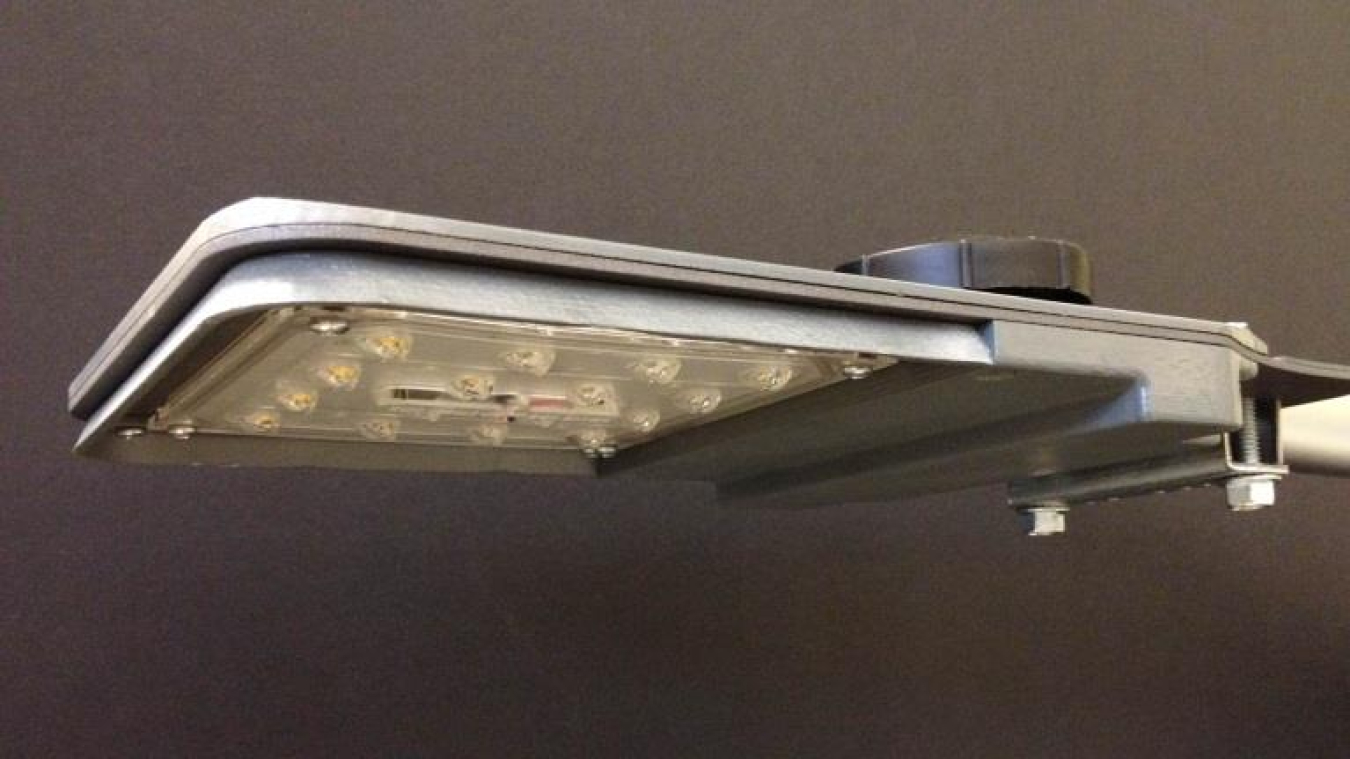PHOSPHORTECH DEVELOPS PLASMONICS-ENHANCED HIGH-LIGHT-EXTRACTION PHOSPHOR SHEETS FOR LED LIGHTING
With the help of DOE funding, PhosphorTech is using plasmonic nanometals to enhance phosphor film performance while reducing phosphor material usage by up to 50% and film manufacturing cost by up to 60% for some colors. (December 2016) Learn more.
Eaton Pursues Print-Based Manufacturing of Integrated, Low-Cost, High-Performance SSL Luminaires

With the help of DOE funding, Eaton used manufacturing process innovation to develop a way to place the LED package, chip, or chip array directly on a fixture or heat sink in order to improve thermal management approaches and reduce manufacturing costs related to $/klm, throughput, and assembly. Non-traditional thick-film processes were used to investigate flexible manufacturing for planar, non-planar, and recessed product designs. (September 2016) Learn more.
LOS ALAMOS NATIONAL LABORATORY ADVANCES THE USE OF QUANTUM DOTS AS LED NARROW-BAND DOWNCONVERTERS
Los Alamos National Laboratory has developed a new “giant” quantum dot that addresses the deficiencies of both phosphors and conventional QDs. With the help of DOE funding, LANL has advanced quantum yields of thick-shell (>6 nm) cadmium-selenide/cadmium sulfide red-emitting gQDs to >80%. (September 2016) Learn more.
PIXELLIGENT IMPROVES THE LIGHT-EXTRACTION EFFICIENCY OF OLED PANELS
With the help of DOE funding, Pixelligent Technologies is partnering with OLED panel manufacturer OLEDWorks to accelerate the commercial viability of OLED lighting by improving the extraction efficiency of OLED panels using Pixelligent’s existing PixClear® technology. (September 2016) Learn more.
CREE DEVELOPS MATERIALS AND DESIGNS FOR HIGH-EFFICACY LED LIGHT ENGINES
Red wavelengths fall at one end of the visible light spectrum and pose an obstacle to the efficiency of red downconverters; too broad an emission range will result in a certain amount of light that gets wasted by falling outside the useful visible spectrum. With the help of DOE funding, Cree is developing novel narrow-band downconverters in the red range that can be efficiently “pumped” by blue LED chips and that have a narrow emission peak which is significantly lower than conventional red phosphors. (September 2016) Learn more.
UCLA DEVELOPS FLEXIBLE, INTEGRATED PLASTIC OLED SUBSTRATE
With the help of DOE funding, the University of California, Los Angeles has been working to develop an integrated plastic substrate to replace the use of indium tin oxide (ITO) on glass for the fabrication of white OLEDs. In addition to seeking a replacement for high-cost ITO and display-grade glass, the project seeks to enhance light extraction through economical methods internal and external to the substrate. (September 2016) Learn more.
CARNEGIE MELLON UNIVERSITY DEVELOPS INNOVATIVE WAY TO IMPROVE THERMAL MANAGEMENT IN LEDS
Heat accumulation in LED packages has been identified as a major barrier to realizing higher efficiencies, drive currents, and reliability in phosphor-converted LEDs. With the help of DOE funding, Carnegie Mellon University, in partnership with OSRAM Sylvania, is developing a new hybrid polymer platform that holds the promise to overcome these limitations in thermal conductivity. (September 2016) Learn more.
LUMILEDS DEVELOPS HIGH-VOLTAGE LED LIGHT ENGINE WITH INTEGRATED DRIVER
With the help of DOE funding, Lumileds has developed a high-voltage LED light engine with an integrated driver, achieving an efficacy greater than 128 lm/W at a luminous flux greater than 4,100 lm and a CCT of 4000 K. The light-engine technology is expected to reduce system cost by 25% for targeted applications. (May 2016) Learn more.
RTI INTERNATIONAL DEVELOPS SSL LUMINAIRE SYSTEM RELIABILITY MODEL
With the help of DOE funding, RTI International is developing and validating accelerated life testing methodologies and reliability models for predicting the lifetime of integrated solid-state lighting luminaires. A majority of this effort focuses on understanding what happens during the luminaire aging process, and the information gained is being used to identify potential failure modes, understand variations across a given product line, and ultimately determine how long testing will take. (May 2016) Learn more.
LUMILEDS DEVELOPS PATTERNED SAPPHIRE SUBSTRATE TECHNOLOGY FOR HIGH-POWER LEDS
Patterned sapphire substrate (PSS) technology is an effective approach to improving efficacy and reducing cost of LEDs and has gained wide use in mid-power LEDs. With the help of DOE funding, Lumileds has developed and industrialized PSS and epitaxy technology for high-power flip-chip LEDs, to bring these benefits to a broader range of applications and accelerate adoption. (May 2016) Learn more.
OLEDWORKS DEVELOPS INNOVATIVE HIGH-PERFORMANCE DEPOSITION TECHNOLOGY TO REDUCE MANUFACTURING COST OF OLED LIGHTING
The high manufacturing cost of OLED lighting is a major barrier to the growth of the emerging OLED lighting industry. OLEDWorks is developing high-performance deposition technology that addresses two major aspects of this manufacturing cost: the expense of organic materials per area of useable product, and the depreciation of equipment. The goals are to achieve a material-usage efficiency of 60% and a total accumulated cycle time of 60 seconds for depositing materials for typical layers. (September 2015) Learn more.
Return to Research Highlights

